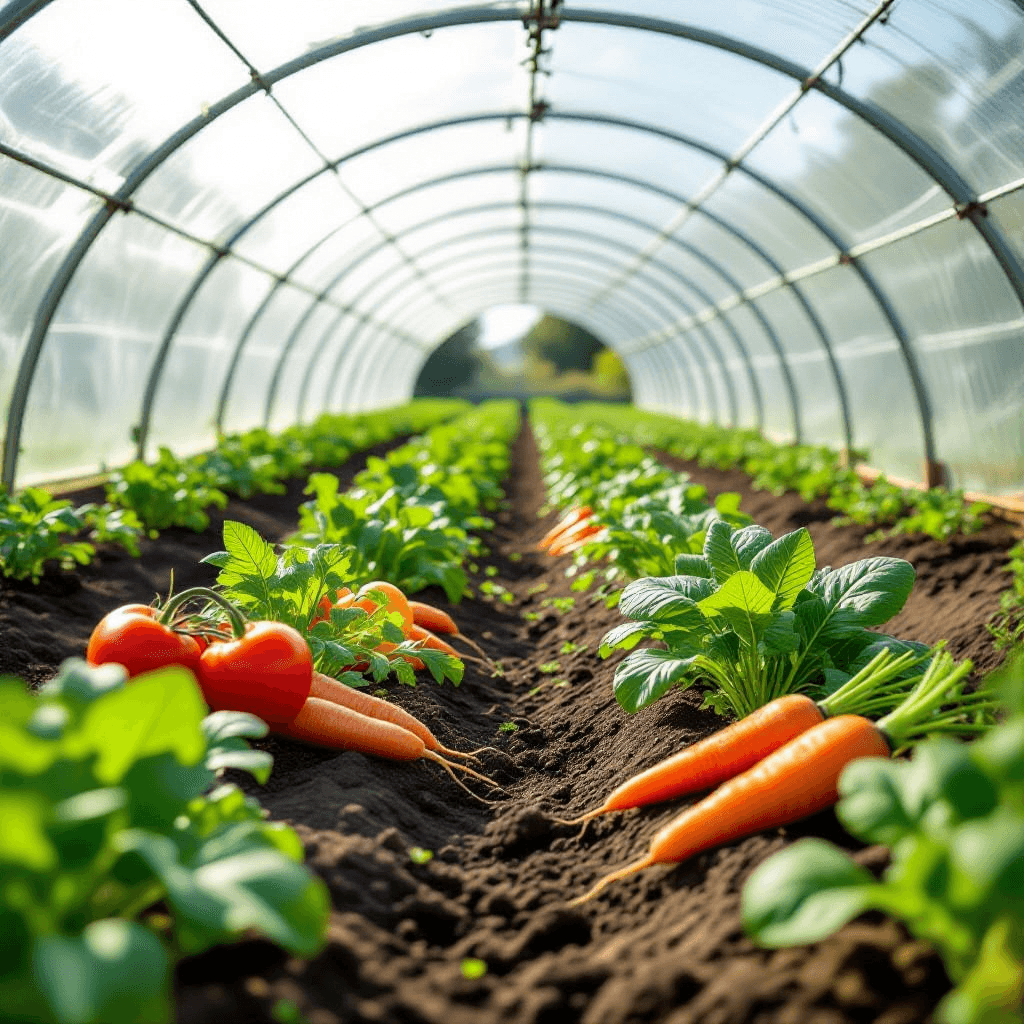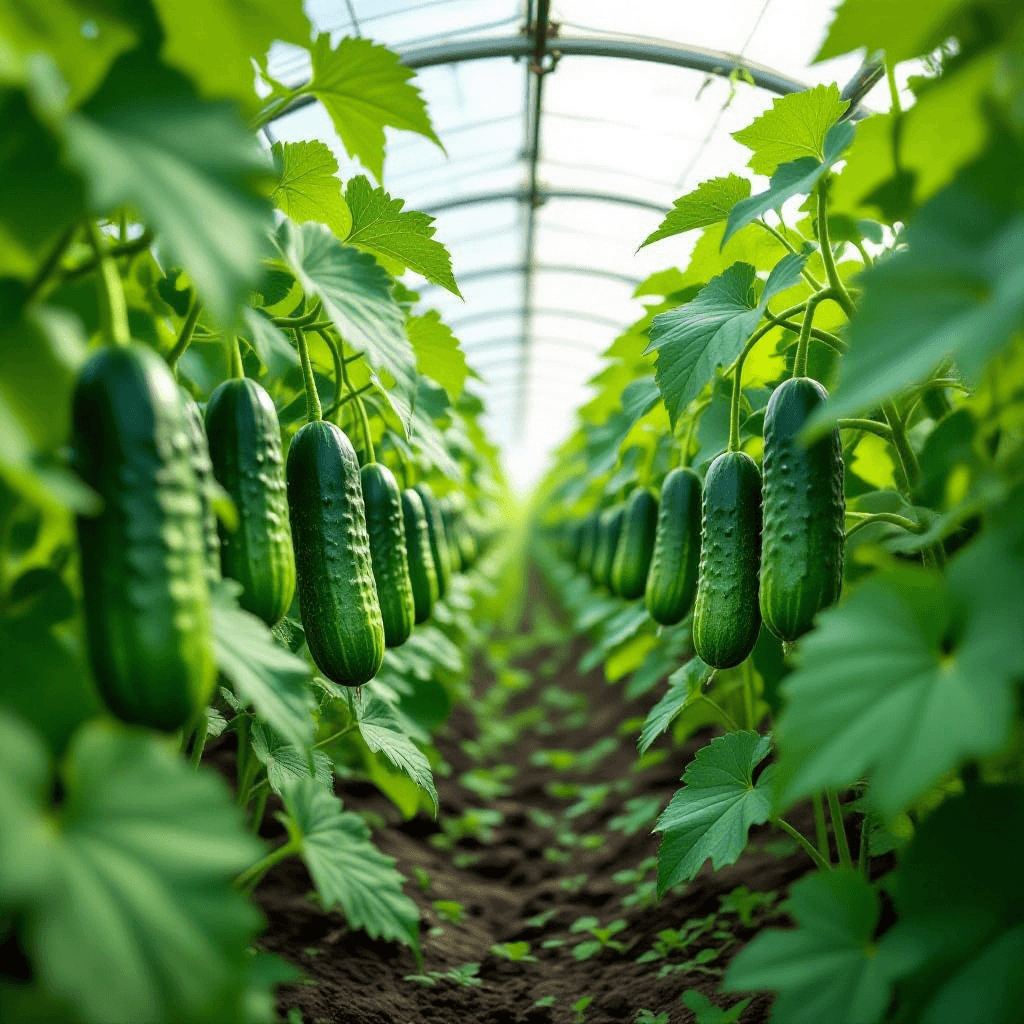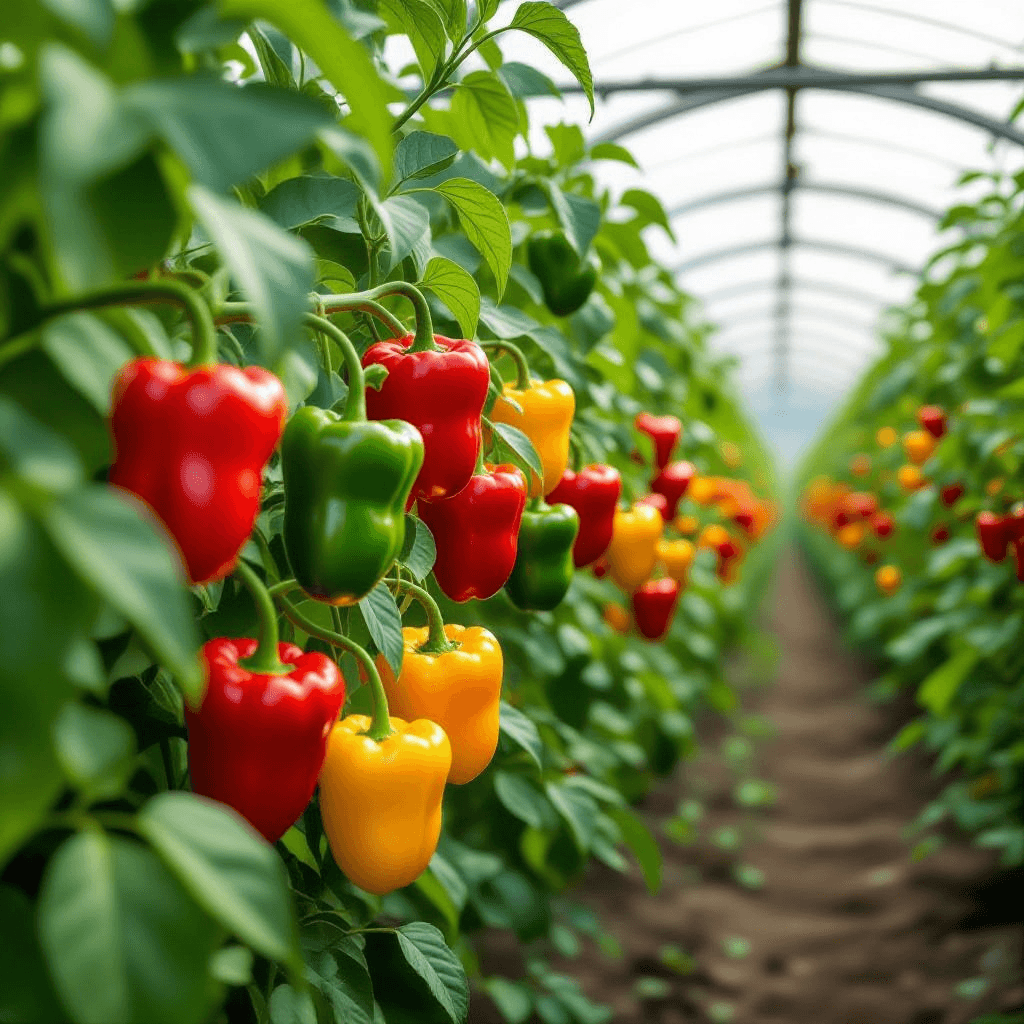Introduction to Polytunnels and Their Benefits
Polytunnels, often referred to as hoop houses or polyhouses, are a popular agricultural structure constructed with a framework of metal or wood covered in a polyethylene film. These structures create a controlled environment for growing various types of crops, making them particularly advantageous for vegetable gardening in the UK. By offering protection from adverse weather conditions, such as heavy rains, snow, and frost, polytunnels enable gardeners to cultivate vegetables throughout the year.
One of the most significant benefits of using polytunnels is the extension of the growing season. In the UK, where the climate can be unpredictable, polytunnels provide warmer and more stable conditions for plants. This allows for earlier planting in the spring and extended harvesting into the late autumn and winter months. As a result, gardeners can expect a higher yield of produce, as many vegetables thrive in the modified environment of a polytunnel.
Polytunnels also serve as a barrier against pests and diseases. By effectively enclosing the plants, they reduce the risk of infestations from common pests that can devastate crops in open gardens. Additionally, the controlled climate inside polytunnels can limit the spread of fungal diseases, ensuring healthier plants and better overall crop performance.
There are various types of polytunnel structures available, ranging in size and design to suit different gardening needs. Some are designed specifically for certain vegetables, allowing for optimal growth conditions tailored to each crop type. From smaller structures suitable for individual gardeners to larger commercial setups, the adaptability of polytunnels makes them a valuable asset in the UK vegetable gardening landscape. Overall, the incorporation of polytunnels into gardening practices provides numerous advantages, making them an effective solution for enhancing vegetable production in the region.
Ideal Vegetables for Polytunnel Cultivation
Polytunnels offer an advantageous environment for growing a variety of vegetables, particularly in the UK’s temperate climate. The controlled conditions within a polytunnel result in extended growing seasons, enabling gardeners to cultivate crops that may otherwise struggle outdoors. Among the most suitable options are tomatoes, peppers, cucumbers, and salad greens. Each of these vegetables brings unique benefits and considerations for successful cultivation.
Tomatoes are a perennial favorite and thrive in polytunnel settings due to their need for warmth and sunlight. When planning to grow tomatoes, it is essential to start the seeds indoors around 6-8 weeks before the last frost date. Transferring them to the polytunnel after the frost has passed allows for an improved yield. Regular watering and feeding with a balanced fertilizer are crucial to promote healthy growth and fruit development.
Peppers, similar to tomatoes, benefit from the protective conditions of a polytunnel. These vibrant vegetables prefer a warm environment and can be started indoors as well. Planting them out in the polytunnel after the danger of frost is essential. Adequate spacing is necessary to ensure optimal air circulation. Peppers also require consistent watering, with a focus on avoiding water stress, especially during fruiting.
Cucumbers are another excellent choice for polytunnel cultivation. These vines appreciate the warmth and humidity that polytunnels provide, enabling them to flourish. Seeds or seedlings can be planted in late spring, and growers should ensure trellising to maximize space and promote proper air circulation. Regular watering is critical, particularly during dry spells, to encourage crisp and refreshing cucumbers.
Lastly, salad greens such as lettuce and spinach thrive in polytunnels, allowing for multiple sowings throughout the year. These fast-growing crops should be sown at intervals to ensure a continuous harvest. Ample watering and protection from pests are necessary to maintain quality and yield. With careful consideration of individual growing requirements, these vegetables can be effectively cultivated in polytunnels, taking advantage of the enriched growing environment they provide.
Seasonal Considerations: Timing Your Planting
Understanding the seasonal patterns relevant to your growing conditions is vital for optimizing vegetable production within polytunnels. This controlled environment allows for a more flexible planting schedule, enabling gardeners in the UK to take full advantage of both early spring and late autumn opportunities.
Generally, spring is the ideal time to sow seeds for crops like tomatoes, peppers, and cucumbers. These vegetables thrive when planted indoors in late March or early April and can be transplanted to the polytunnel from mid-April onwards. An understanding of frost dates is critical, as polytunnels can provide the protection needed for tender plants against unexpected cold snaps.
As summer progresses, vegetables such as aubergines and sweet corn can be planted, with sowing typically occurring from May to June. The warmth retained in the polytunnel can accelerate growth and contribute to a successful summer harvest. It is also essential to implement sequential sowing—planting small batches every few weeks—to ensure a steady supply of fresh vegetables throughout the season.
Moving into autumn, the polytunnel proves advantageous for extending the growing season. Crops like kale, spinach, and winter radishes can be sown in early September, allowing for harvesting even into November or beyond. The added protection of polytunnels helps to maintain a more consistent temperature, permitting certain vegetables to flourish despite the declining outdoor temperatures.
In conclusion, planning your planting schedule based on seasonal patterns is essential for maximizing vegetable output in polytunnels. By strategically timing the sowing and transplanting of various crops, gardeners can enjoy the benefits of an extended growing season, effectively increasing their yield and ensuring a bountiful harvest year-round.
Tips for Successful Vegetable Growing in Polytunnels
Successfully nurturing vegetables within polytunnels requires a combination of thorough preparation and ongoing management. The first step in this process is soil preparation, which establishes a solid foundation for healthy plant growth. It is essential to test the soil for nutrient levels and pH balance before planting. Enriching the soil with organic matter, such as well-rotted compost or manure, can significantly improve its fertility and structure, allowing for better root development.
Effective watering methods also play a crucial role in vegetable cultivation within polytunnels. Due to the enclosed environment, the temperature can rise quickly, leading to increased moisture loss in the soil. Implementing a drip irrigation system can ensure that the plants receive consistent moisture without the risk of overwatering, minimizing the chances of root rot and fungal diseases. Additionally, watering in the early morning or late afternoon helps reduce evaporation and maintains adequate humidity levels.
Pest management is another critical aspect of successful vegetable growing in polytunnels. Regular monitoring for pests and diseases can help catch potential issues early. Employing integrated pest management strategies, such as introducing beneficial insects or using organic pesticides, can reduce the need for chemical solutions and promote a healthy ecosystem within the polytunnel. Moreover, maintaining good airflow by spacing plants appropriately and using ventilated covers can prevent overheating and the onset of fungal infections.
Lastly, adopting crop rotation and companion planting techniques can enhance productivity and plant health. By rotating crops each season, gardeners can disrupt pest cycles and maintain soil nutrient levels. Similarly, pairing compatible plants can improve growth conditions; for instance, planting basil alongside tomatoes can deter pests and encourage healthy development. Overall, these practical tips can empower growers to achieve plentiful harvests from their polytunnel vegetable gardens.


